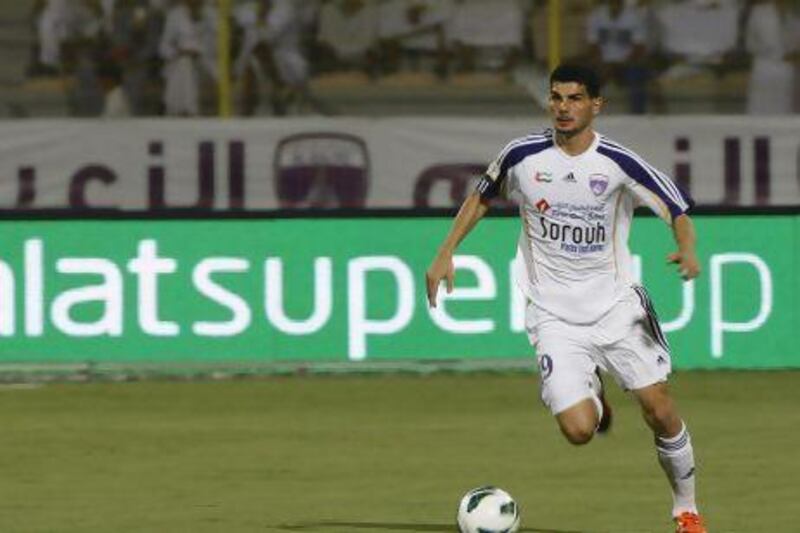Many football supporters do not pay much attention to the numbers within the game: passes attempted and completed, passes sent forward or back, kilometres run.
Increasingly, however, clubs and coaches on the cutting edge of the game believe those numbers are inextricably linked to how often a ball goes in the back of a net.
Al Ain, the Pro League champions, have taken the lead among UAE clubs in the statistical analysis of teams and individuals by introducing the Prozone Sports method.
Liam Weeks, the club's head of performance analysis, held a similar job with the English Premier League club Norwich City, and was instrumental in bringing Prozone to Al Ain.
Established in the UK in 1998, Prozone measures thousands of individual acts within a 90-minute game, and the mountains of data provided has found subscribers among clubs round the world.
When Al Ain play, nine cameras are spread around the stadium, meaning every angle of play is covered.
The assembled video of the match is sent to Prozone, which for this region is located in India.
A staff of 40 analysts examine every conceivable piece of data, be it physical, tactical or technical, and within 24 hours returns its findings to Weeks. He then produces a 50-page report on the match, which is passed on to the manager, Cosmin Olaroiu, for dissection by him and his assistants.
"I'm glad that Cosmin is a manager who emphasises importance on data, and uses the Prozone data to great effect in team meetings after every game," Weeks said.
"One thing I love about players here: they all want to learn. Sometimes players walk into my office and ask if they can see some videos and stats from their performances and want to improve on that."
Players can, for example, see the effectiveness of an attacking midfielder by looking at his distances covered, at what running speed, where his runs started and finished, and how many passes were forward or backward.
For every action, whether it is a pass, a shot or a tackle, a single click on the graph produces, in a fraction of a second, video clips showing the results of that scenario.
It is a vital tool in modern football that is in regular use even among England's second-division (Championship) clubs.
However, in the UAE only Al Ain, Al Ahli and Al Jazira use it.
Baniyas reportedly have plans to introduce Prozone next season.
The expense of the system may scare off some smaller clubs. Prozone costs about 500,000 (Dh2.4 million) per season.
However, if the whole of the league were to buy in, each club would owe only 400,000.
Some old-school coaches remain convinced they can see all they need to see with their own eyes, but the trend is towards paying for advanced performance analysis.
The Qatar Stars League purchased Prozone for every club in the league in the belief it will create stronger clubs and national teams.
This is an investment the Pro League and the UAE Football Association should seriously consider.
Al Ain have been a great source of help for Mahdi Ali, coach of the senior national team, in supplying useful data on the club's Emirati players, such as Omar Abdulrahman, Mohammed Ahmed, Mohaned Salem and Dawoud Suleiman.
Weeks said Salem, in particular, "has improved his game a lot from the Prozone analysis. That's why he is in the national team now."
Weeks said Al Ain make a practice of comparing, with the aid of Prozone, their players with the best in the English Premier League.
Salem, a central defender, was compared with John Terry of Chelsea, to discover "what Terry would do under pressure, or how he moves the ball from the back, which is the most important thing and decides the flow of the game," Weeks said.
Prozone also is used to scout the opposition.
A standard TV recording can be fed into the system and an analysis of the opponent is generated.
Coaches and players are able to see, for example, if a certain midfielder prefers to link up with a forward player or how a holding midfielder breaks up play.
Having that information can help form a game plan to counter and disrupt an opponent's preferences.
The Pro League is on a steady rise, and the introduction of more technology at all clubs will continue that curve onwards and upwards.
Follow us
[ @SprtNationalUAE ]





